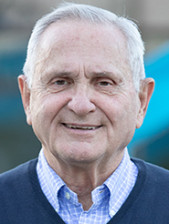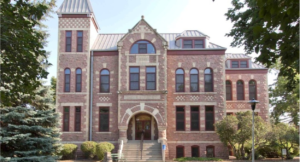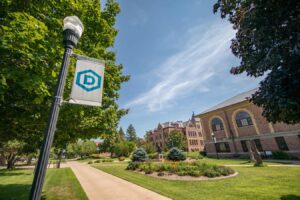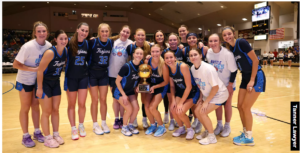District 8 Candidates Speak at DSU Forum
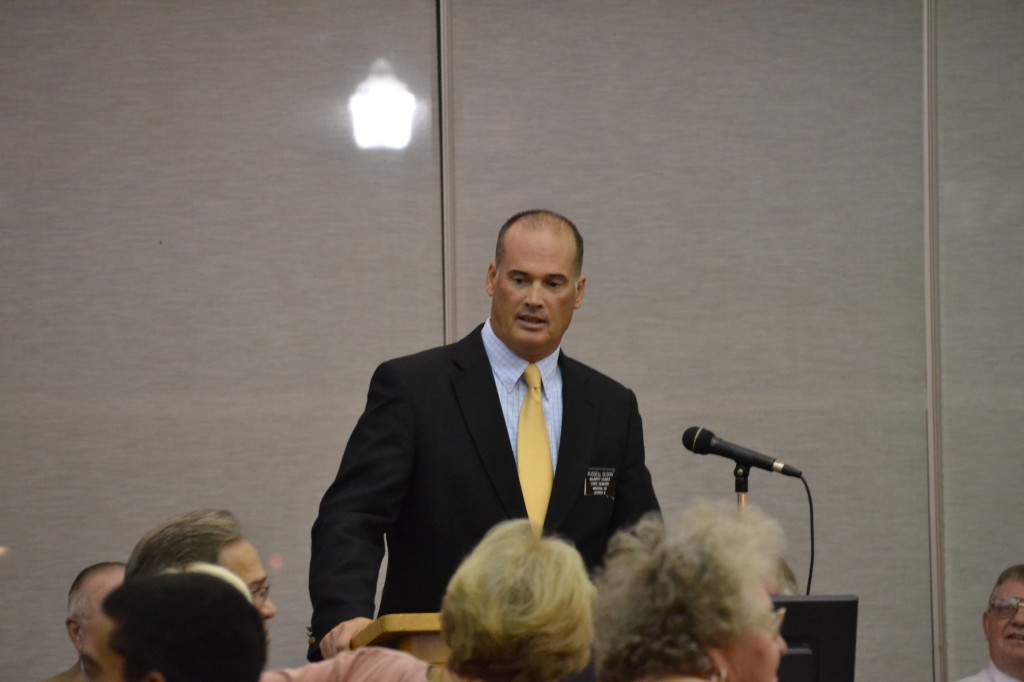
With a Presidential election being held this year, one may forget that there are local elections also being held to determine the makeup of the state legislature. In particular, Madison’s district, District 8, is a battleground with six candidates competing for the limited number of seats in both the State House and the State Senate.
As part of the campaign process, each candidate participated in a legislative forum at the Trojan Center back on October 16, exactly three weeks before Election Day. The candidates included Republican Russell Olson, the current State Senate Majority Leader, and his Democratic challenger Charlie Johnson, a lifelong Madison resident who ran for school board as an 18-year-old.
Despite the venue, all but a few of the crowd were middle-aged or elderly, with only a handful of students paying any interest in the proceedings. Nonetheless, the candidates did the necessary emotional appeals about how DSU personally affected them in a positive way, whether it may have been them or their children graduating from there or some other reason.
Senator Olson, in particular, brought up about how his first bill in the legislature was to change the laptop standards so that they could be sold for the students’ and DSU’s benefits. After these appeals subsided, the candidates began talking about their political platforms.
As his main issue, Johnson believes that education is underfunded by the state. Johnson believes the state has an obligation to provide some form of education for all ages. He also believes South Dakota needs to improve its infrastructure and provide more opportunities to youths than are currently available.
The State House is an interesting case, as both seats are up for grabs as a result of the statewide redistricting that occurred after the 2010 census. On the Republican side, Dr. Leslie Heinemann, a dentist, and Gene Kroger are in the running for the two open seats.
Heinemann declared his main issues for running involve Medicaid, but offered little specifics, mostly agreeing with the standard Republican lines on each issue. Kroger, a retired Methodist pastor and Madison resident, seemed to be running on the Tea Party platform of a balanced budget and limited government with little to no support on additional taxes.
On Democratic side for the House, Scott Parsley and Roy Lindsay are running on issues similar to Johnson’s. Both believe that South Dakota needs to fund education better than it currently does.
Lindsay, a former Madison High School teacher for 33 years, was particularly irked by the controversial education reforms passed by the state government earlier this year (and then referred) that, among other things, phased out tenure for prospective teachers and called for bonuses to math and science teachers. In his criticism of this bill, Lindsay said, “Education is something that brings business to the state.”
Parsley believes, in addition to the education issue, that South Dakota has an obligation to invest in clean and renewable energy and help provide more affordable healthcare to all South Dakota citizens.
After the candidates finished their stump speeches, the floor was opened up to the audience for questions pertaining to state issues. Of particular interest and discussion was Initiative Measure 15, a ballot initiative that will be voted on Election Day.
For the majority of us who can’t keep our many ballot measures straight from each other, Initiative Measure 15 is a measure that seeks to raise funding for education and Medicaid through a second penny sales tax for every dollar spent. This tax affects all no matter the income bracket of each person.
The Democratic candidates were largely for the measure. Lindsay supports the measure because he said that the measure is what the people want, after the initial cuts came in the Mike Rounds administration.
Johnson said he supports it, but thinks a better way to fund education is to eliminate the property taxes that currently fund education and replace it with a gross revenue levy tax. Johnson proposes that such a tax should be capped at 1 percent of a person’s income, no matter if they flip burgers or if they are neurosurgeons.
But, in regards to his support of the measure, Johnson stated, “They’re trying to do something.”
Parsley directed his support of the measure back to his talking points, ““I will guarantee that teacher’s salaries are not going up and health care costs are not going down.”
Meanwhile, the Republican candidates had a different opinion, believing that the ends don’t justify the means.
Senator Olson vehemently opposed the measure on the basis of it being a tax, saying, “To raise a tax by 25% with no explanation of how the monies will be spent is ridiculous.” He also said that raising taxes is not a fair way to raise an additional $180 million annually.
Kroger, on the other hand, agreed with Olson on the tax basis. He also had perhaps the most insightful thought on the measure, pointing out that such a tax disproportionately affects the poor, who obviously feel more of the financial impact of the tax than the middle class or rich.
On another education issue that dealt with how to raise funds if Initiative Measure 15 failed, the rhetoric was once again split on party lines. The Democrats placed blame on the legislature for not addressing this problem sooner. Johnson maintained the state is currently using a 19th century tax structure for 21st century needs.
Lindsay suggested that South Dakota should tax Internet sales like other states are doing, with 4 percent going into the general fund.
Parsley summed up the Democratic position succinctly, “The best return in economic development is in education.”
He later added, “If the 1 percent sales tax does not pass, we’re going to have to look at priorities.”
As before, Olson and Kroger remained opposed to any tax increases. Olson in particular seemed to be on the defensive on the education cuts, saying that nobody goes to Pierre with the intent on cutting education funding, while also adding in regards to the math, “We don’t want to stick money in a base formula and not knowing what it would do.”
Providing a capper to the issue, Kroger uttered the common doomsday scenario in equating the financial troubles to the chaotic situation in Greece.
Things took a slightly less partisan turn when the proposition of a ban on texting while driving came up. The issue seems mostly divided on generational lines, with the older citizens advocating for the ban and the older politicians more receptive to the idea.
In his support of the ban, Lindsay brought up the math, claiming that it takes an average of five seconds to read a text, a deadly proposition when traveling down a highway at 65 miles per hour. He found a full ally in Johnson. Parsley, a supporter of a ban, said the issue frequently comes up in campaigning.
Some support for such a ban even crossed the political aisle, with Heinemann saying, “Texting is inherently dangerous,” although he is only at the stage of listening to the arguments rather than supporting a full ban. Olson, meanwhile, declared the issue to be a social engineering one, hesitant to support a ban.
The forum once again got back to education funding in the final question of the night. One student, in particular, pointed out the flaw in the college financial structure for middle-class families, who receive an income too great for their children to apply for grants, yet cannot realistically bear the entire higher education burden for all of their children if they have several.
All the candidates were sympathetic to the student’s question, but did not have a concrete solution to the problem. Lindsay believes the student’s issue is a microcosm of an issue being felt throughout the country, thus saying the issue needed to be addressed at the federal level rather than the state level. Johnson, meanwhile, was more accusatory, going back to his talking points of how the state has failed to provide higher education funding that could help alleviate the problem.
The answers were even more ambiguous on the Republican side. Heinemann gave the safe answer of supporting funding for higher education as best as the state can.
Olson, on the other hand, had less than impressive answers to the problem. Despite being a Pell grant recipient, and thus having a first-hand awareness of the issue of paying for higher education, Olson believes that the state has already done most of what they can, pointing to the Opportunity scholarship program that has been in place in high schools for the past few years (well, at least since the editor can remember).
Clinging to the conservative notion that private enterprise should be the economic driver, Olson touts how he tries to recruit businesses to college towns. These businesses, in turn, can offer employment opportunities to college students. Olson seemed to be ignoring the fact that, in the best-case scenario, slightly above minimum wage employment does not even come close to offsetting the financial burden that is higher education.
After the candidates spoke (ending around 8:00 P.M.), the event quickly dissolved, as there was the second Presidential debate that was calling for the attention of all who were interested in politics (i.e. everyone at the candidate forum).
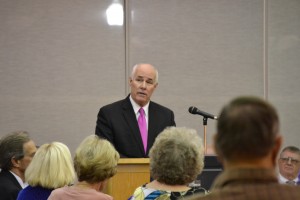
Featured photo: Republican State Senate Majority Leader Russell Olson speaks to the forum crowd on Tuesday, October 16. Olson, as the only incumbent, often had to defend the Legislature from attacks poised by the other, mainly Democratic, candidates.
Photos taken by Tiffany Sommer




